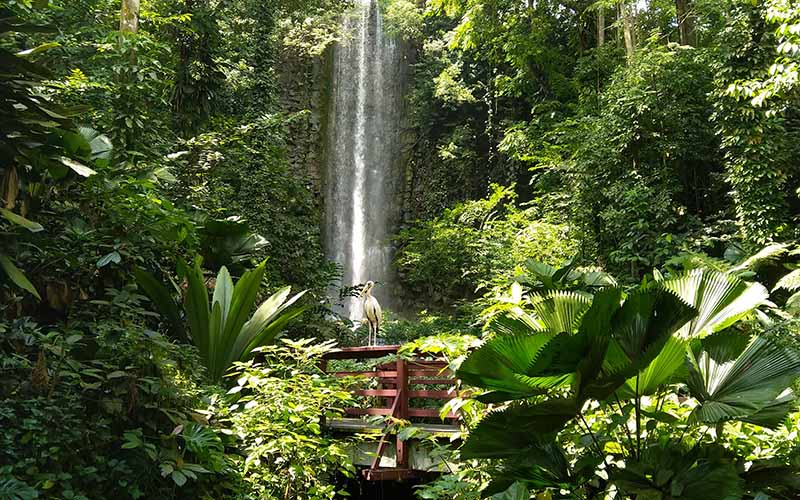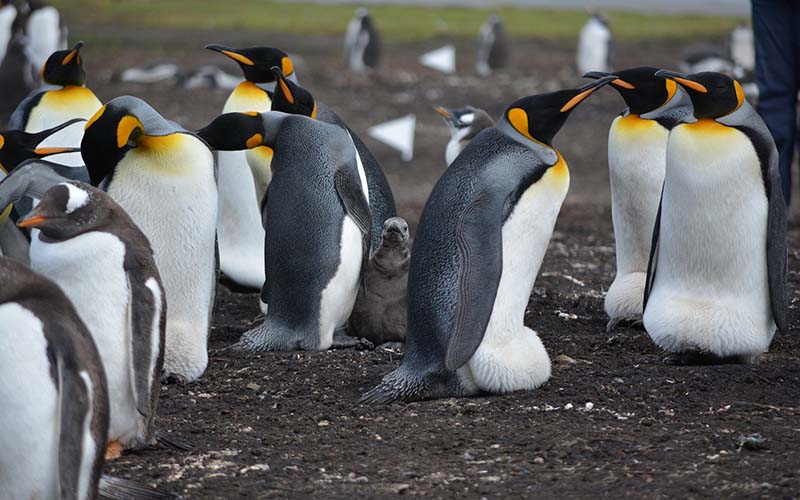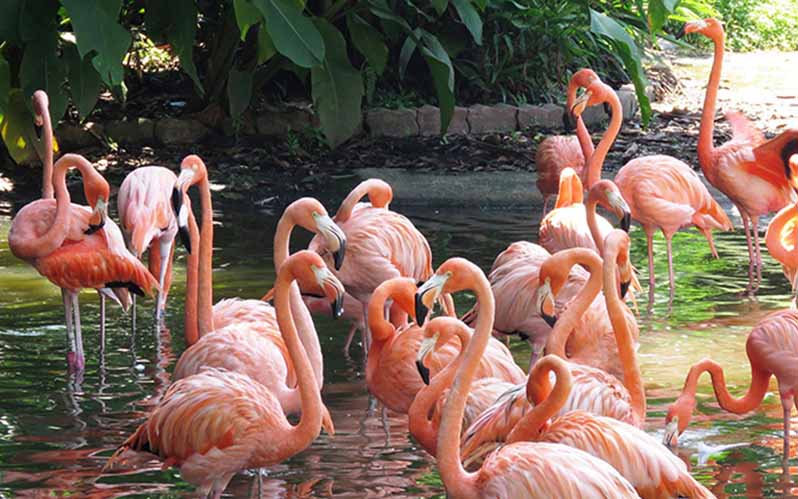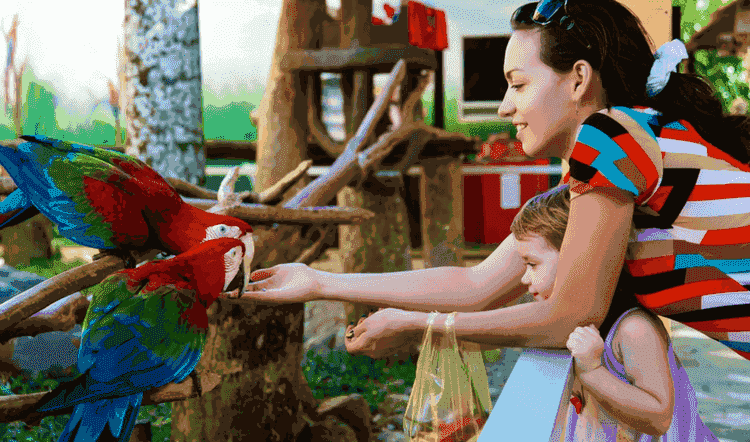Around 5000 birds from 400 different species can be seen at the Jurong Bird Park, which is a part of River Wonder Singapore. These include the all-blue African Turaco perched on tall trees, black Tasmanian Swans floating in the water, and penguins from Antarctica lounging on the shore. On the western slope of Jurong Hill, 49 acres are taken up by the open flight aviaries and other show areas at Jurong, one of the largest aviaries in the world.
The Rio Aviary in Rio De Jenario served as inspiration for the creation of Jurong Bird Park Singapore, when Dr. Goh Keng Swee, the then-Minister of Finance, travelled to Brazil in 1967. For Singaporeans and guests to the industrial city since 1971, this park has been a haven of greenery. The dynamic surroundings, which are kept in sync with the natural habitat of every species of bird, provide an immersive experience for more than 800,000 visitors each year. Here is everything you need to know about Jurong Bird Park-
Best Time to visit Jurong Bird Park
Though Jurong Bird Park can be visited any time of the year, the best time to witness the maximum number of beautiful birds is in May, July, and August. The maximum temperature remains at 30-degree Celsius and minim remains at 25-degree Celsius. Even if you encounter raindrops, you can spot them easily.
Things To Do At Jurong Bird Park, Singapore
The Waterfall Aviary

The Jurong Bird Park Waterfall Aviary resembles a tropical rainforest with its 35-meter height and the tallest indoor waterfalls ever built. To fully appreciate the beauty of the aviary, you may see the rare bird species from the Hut or the hanging bridge. When you speak with the keepers, you can observe the colourful flights of vibrant starlings, Turacos with their hairdos, and other uncommon bird species. The keepers feed the birds twice a day at 10:30 and 2:30.
The Lory Loft
The bowl-shaped Lory Loft, a walk-in flying aviary, is home to a variety of coloured brush-tongued lorikeets that soar through the air. A two-tiered feeding tower with imported Lory dry mix, honey, and water is located in the middle of the aviary where you may hand-feed lori of 10 different kinds. This incredible encounter was designated one of the “Top 10 Best Family Experiences” by the Singapore Tourism Board. The Lory Loft is home to a variety of loris, including the Black-capped Lory, Blue-streaked Lory, Brown Lory, Red Lory, and Chattering Lory.
Penguin Coast

The gorgeous penguins, including the African, Humboldt, King, and Macaroni kinds, as well as the endangered Inca tern, Grey-headed Gull, and Atlantic Puffin species, are all found throughout the region known as the Penguin Coast. The glass wall is 30 metres wide and offers a continuous view of their 1630 square metre environment. The 500 kg of ice that is dumped each morning is where you could find the penguins having fun. The enclosure’s temperature and lighting are adjusted to the penguins’ biorhythm.
Flamingo Lake

Flamingo Lake is home to these numerous flocks of pink beauties, who may be seen wandering the area and peering up at passers-by. Among the various flamingo species that reside here are the Greater Flamingo, Lesser Flamingo, Chilean Flamingo, and Caribbean Flamingo.
Pelican Cove
The underwater pelican viewing gallery at the Jurong Bird Park is the first of its kind and has a wide variety of pelican species, including Australian, Asian spot-billed, Dalmatian, Brown, American white, African pink-backed, and American white. You could see them diving and swooshing in their native habitat during the daily talk sessions.
Hornbill and Toucan Aviary
As you approach the Hornbill and Toucan Aviary, you will be welcomed by the loud honking of these magnificent birds. The collection of hornbills and toucans has 19 different species of hornbills in 27 aviaries, within a combined area of 2000 square metres. Hornbills, which are unrelated and may be found in sub-Saharan Africa, Asia, and Central and South America, have adapted to one another’s environments and are depicted together in this case due to their similar physical traits and diets.

Bird Paradise Singapore
Birdz of Play
The Jurong Bird Park is entertaining for everyone, but Birdz of Play may be the most exciting place for your kids to play and learn because of its themed wet and dry play areas, multipurpose pavilion, and gaming rooms. Your children can learn about more than 250 different bird species at the Bird Discovery Centre in this region, which is set up like a real-world classroom.
King of the Skies
The Kings of the Skies Show is held at the Hawk Arena every day from 10:00 am to 4:00 pm. Some of the most potent predatory birds are included in this, including the Harris’s hawk, the hooded vulture, and the white-tailed sea eagle. Other birds that will seek their prey in the vicinity include Brahminy kites, vultures, and Malay fish owls. Even better, you may participate in the show by honing your falconry skills.
Camping
One of the most unique and best things to do at Jurong Bird Park is escaping the chaos and getting lost in the nature’s serenity. Take your little ones or you special someone to spend a night in the tents under the stars and wake up to the bustling chirping of the birds. Enjoy exploring and indulging in various activities as you get to learn about the different species of birds.
Breeding and Research Centre (BRC)
The breeding and research facility include an incubator room and a nursery room where eggs from endangered bird species are kept. This region is where you may find the dusky lory, Asian fairy-bluebird, and Marigold lorikeet.
Animals and Exhibits of Jurong Bird Park
Jurong Bird Park is a significant tourist attraction in Singapore, and because it is Asia’s largest park and home to exotic and endangered species, you may come across some birds you have never seen before. Here is a list of the zonal distribution of Jurong Bird Park, which might help you on your bird-watching expedition.
Birds of Prey:
This zone includes a series of large aviaries housing different species of birds of prey. To enjoy the majestic wings of birds of prey, participate in the Bird’s Eye Tour and King of the Skies Show.
Flamingo Lake:
look for the mud nest mounds where the flamingo eggs are kept. Witness the gorgeous pink-hued flamingos while you capture them in your memories.
Flamingo Pool:
Down to see the beautiful Caribbean Flamingo? Jurong Bird Park offers you an exclusive opportunity to spend some time with these divas at their one and only Flamingo pool.
Hornbills and Toucans Zone:
This zone spans over 2,000 metres of house and is home to 27 spacious aviaries containing approximately 19 hornbill species. You can even find the black hornbill here, which is usually rare to capture.
Lory Loft:
This zone is prominently visited for feeding sessions in the Lory Loft with the dry mix, honey, and water. Don’t forget to take some stunning photographs of these voracious birds.
Pelican Cove:
Find the different species of pelicans roving here and there. Asian spot-billed pelicans, Australian pelicans, and African pink-backed pelicans are some of the stars of Pelican Cove.
Penguin cost:
Encounter the most adorable species of this park. This 1630-meter indoor zone houses different penguin species, such as Rockhopper and Macaroni.
Swan Lake:
meet the long-necked, elegant species of birds. These long-necked swans beautifully gliding through the tranquil waters are worth a watch.
Wings of Asia:
See some of Asia’s most exotic birds.Wings of Asia is home to endangered species that are protected by the Jurong Bird Park authorities.
Waterfall Aviary:
Witness and enjoy the magnificent world’s tallest indoor waterfall at Jurong Bird Park’s waterfall aviary. Soak yourself in the panoramic views of the surrounding nature while you hear the chirping birds and cascading waterfalls.
Wetlands:
Wetlands are combined with the three essential elements of Earth: water, nutrients, and warmth, creating a bustling zone to halt and engage in splendid bird-watching.
Bird Research Center:
Here, you can find the nannies of the Jurong Bird Park caring for and feeding the chicks and eggs. Visit the incubation centre as well, where abandoned eggs are stored to improve the hatching process.
How to get there
Via MRT and bus: take the nearest MRT station to the Jurong Bird Park, which is the East West MRT Line, and exit at Boon Lay Station. Walk to the Boon Lay bus interchange and take Bus No. 194 to Jurong Bird Park.
Via road: Jurong Bird Park is barely a few minutes drive from the main city. You can either take the Pan Island Expressway or the Central Expressway to get to the park.
Tips for Visiting Jurong Bird Park
- Before you plan your trip to Jurong Bird Park, check the weather and the best time to visit.
- Buy tickets in advance to enjoy these beautiful avian divas without any hurdles. You can get them online with great deals and offers.
- Jurong Bird Park is packed with numerous things to do and see, so plan to spend at least half of your day here.
- Ensure to carry all the essentials, like sunglasses, sunscreen, and ointments.
- Since Singapore is prone to occasional showers, don’t forget to take an umbrella with you.
- Apply insect repellent to ensure protection from unexpected insect bites.
- Don’t forget to carry plenty of water to avoid dehydration. There are water dispensers located at different locations within Jurong Bird Park. You can easily refill the water bottles.
- In case you are hungry, simply head to one of the food points located within Jurong Bird Park.
- Always keep extra clothes for emergencies and wear comfortable shoes.
FAQ’s
Are there any activities in Jurong Bird Park?
Yes, Jurong Bird Park is filled with various activities and shows where you can indulge and interact with the birds.
Can I bring food and beverages into the park?
No need to bring your own food; there are various dining options inside Jurong Bird Park. Try Hawk Café, Birdz of Play Café, or Curry Garden. You can even dine with parrots at Songbird Terrace.
Conclusion
For bird-watchers and nature lovers, this is the place to be. It’s a once-in-a-lifetime opportunity, and everyone who enjoys nature should visit. Don’t miss out! Visiting Jurong Bird Park is also one of the best things to do in Singapore with kids.
